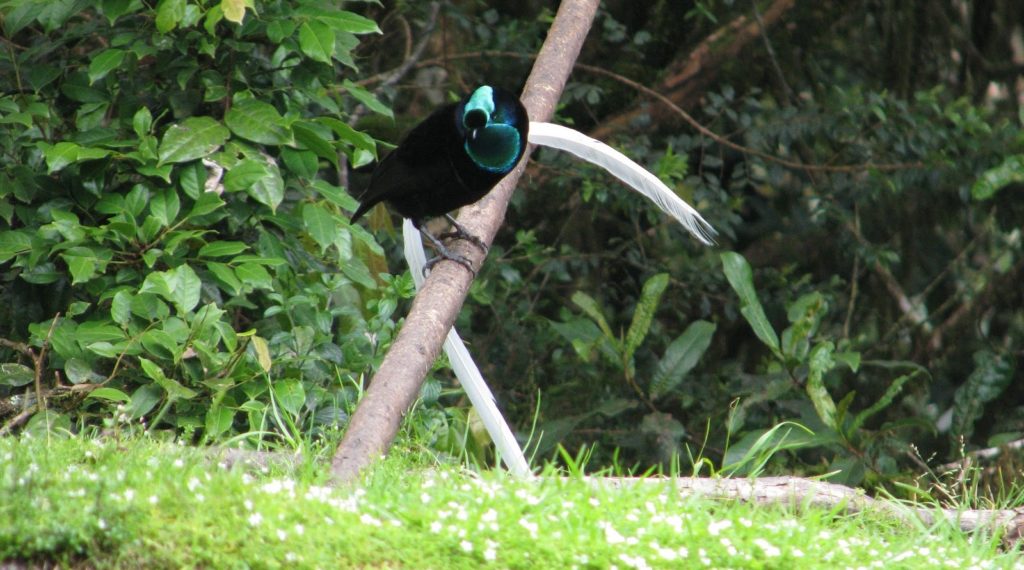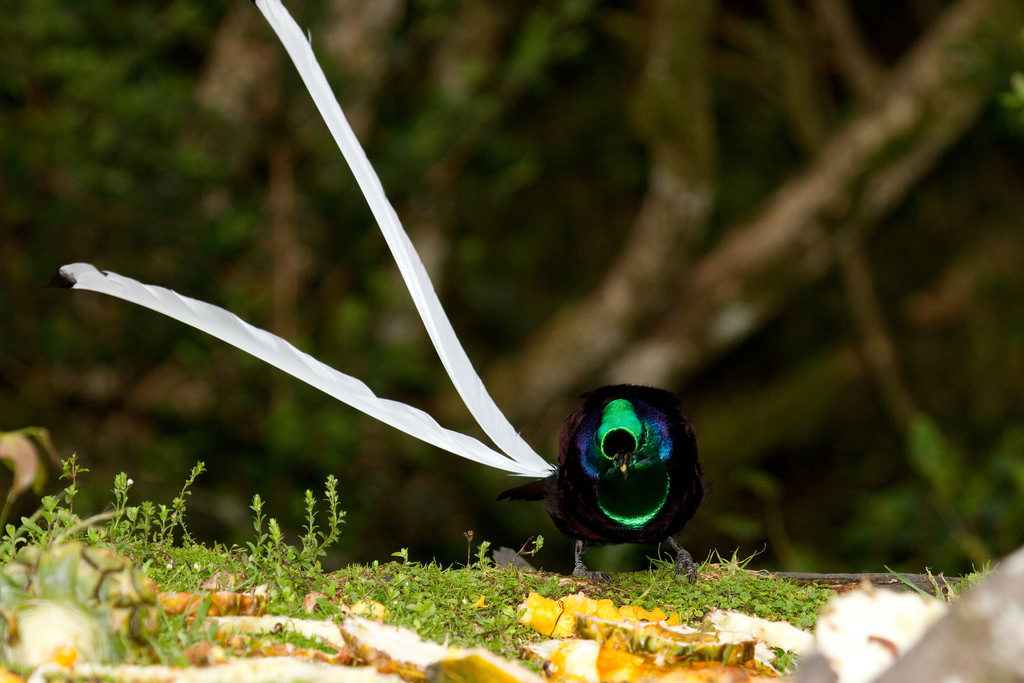One of the most outstanding birds of paradise, the male Ribbon-tailed Astrapia has the longest tail feathers in relation to the body size of any bird, over three times the length of its body. Nature’s most beautiful bird “The Ribbon-Tailed Astrapia” is also recognized as “Shaw Mayer’s Astrapia” (Astrapia Mayeri) and can be easily called the bird of paradise.
One of the most remarkable birds of paradise, the male ribbon-tailed Astrapia has the longest tail feathers in relation to the body size of any bird, over three times the length of its body. The ribbon-tailed Astrapia is the most recently discovered bird-of-paradise.
This stunning bird is distributed and endemic to subalpine forests in the western part of the central highlands of Papua New Guinea. However, similar to another ornamental bird of paradise, the male is polygamous. This species is likely to have a moderately small population within its small range.
Hence, the bird is listed as near threatened on the ICUN Red List of Threatened species due to habitat loss and hunting for its plumes. The terrifically long tails of male Ribbon-tailed Astrapia sometimes have to pause to untangle their tails before they can fly away not a survival advantage. But the tails also help them to entice females. And by carefully choosing their mates, the females determine which males’ genes and what kinds of tails survive to the next generation.
In 1938, the great naturalist Fred Shaw Mayer discovered the bird, however, several believed explorer Jack Hides discovered the bird first, and later on, Shaw Mayer became interested in it. The Ribbon-Tailed Astrapia is medium-sized bird; up to 32 cm long excluding his tail, which is approximately I meter long.
The body is normally velvet black, though the male has an iridescent olive green and bronze plumage adorned with an ornamental “ball” plume above its bill and two extremely long, ribbon-like tail feathers. Therefore, the female bird is brown with an iridescent head; hybrids between this species and Stephanie’s Astrapia in the small area where their ranges overlap have been named Barnes Astrapia. The bird’s common call is a loud clear “waugh”, or “wock, whit-whit”.
The Ribbon-Tailed-Astrapia diet consists of fruits, especially from the Umbrella Tree, and insects, spiders, and frogs and also like to upper montane and subalpine moss forests and forest edges; 1800-3450 m, mainly above 2450m.
The birds commonly display occur during June, August, and December forms leks in which male bird are displayed from traditional perches, jumping back and forth between branches with erect, arched tail feathers. The recorded breeding season is March till May when females build and attend nests alone and repeatedly build a nest in the same spot and site. The incubation period is normally 21 days, and the nestling period is 25 to 29 days.
Read More.
- Belted Kingfisher (kingfishers)
- Ruddy Kingfisher ! A Perfect Photogenic Bird
- The Crested Kingfisher (Megaceryle lugubris)
Source: Wikipedia


















